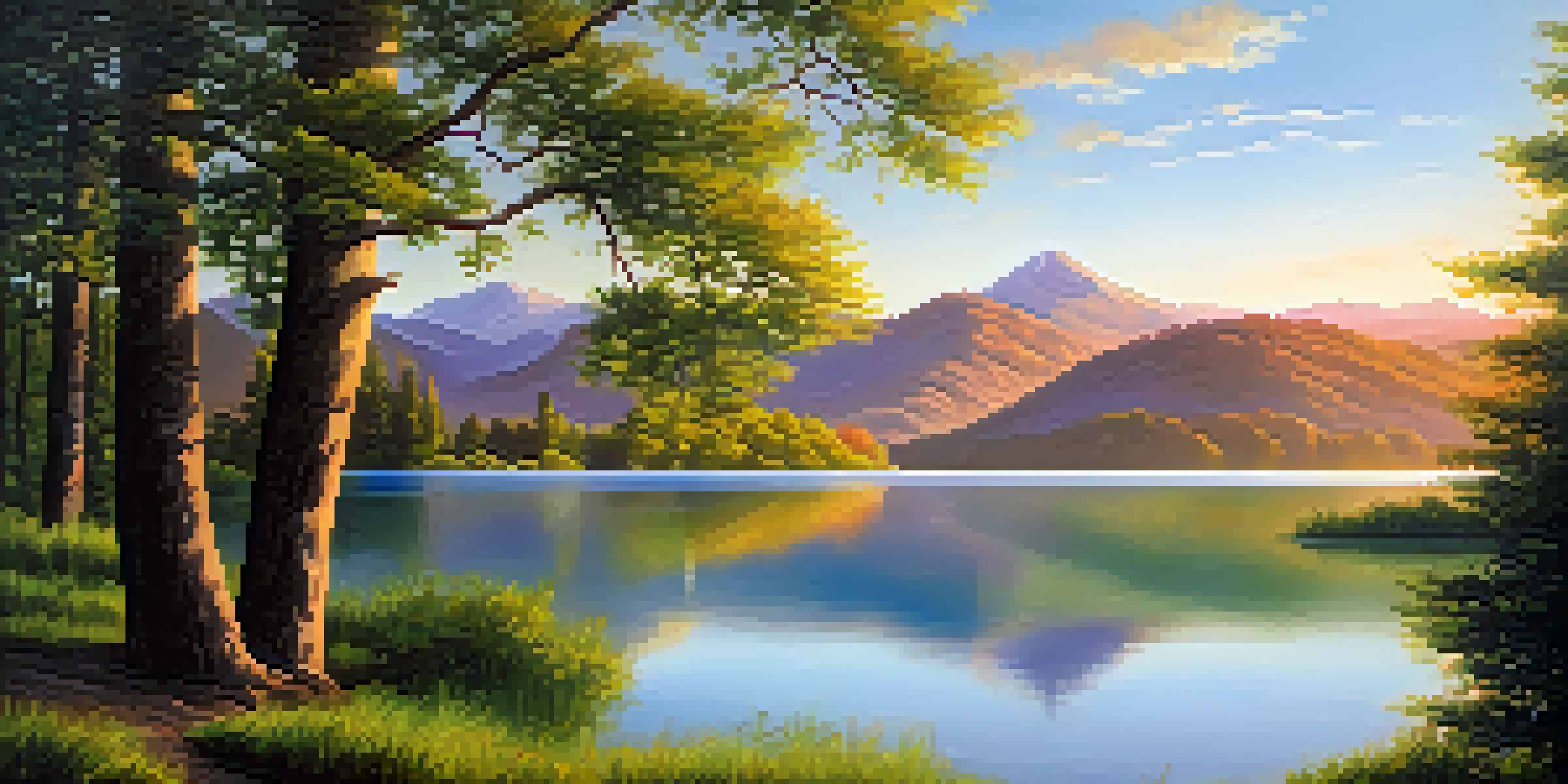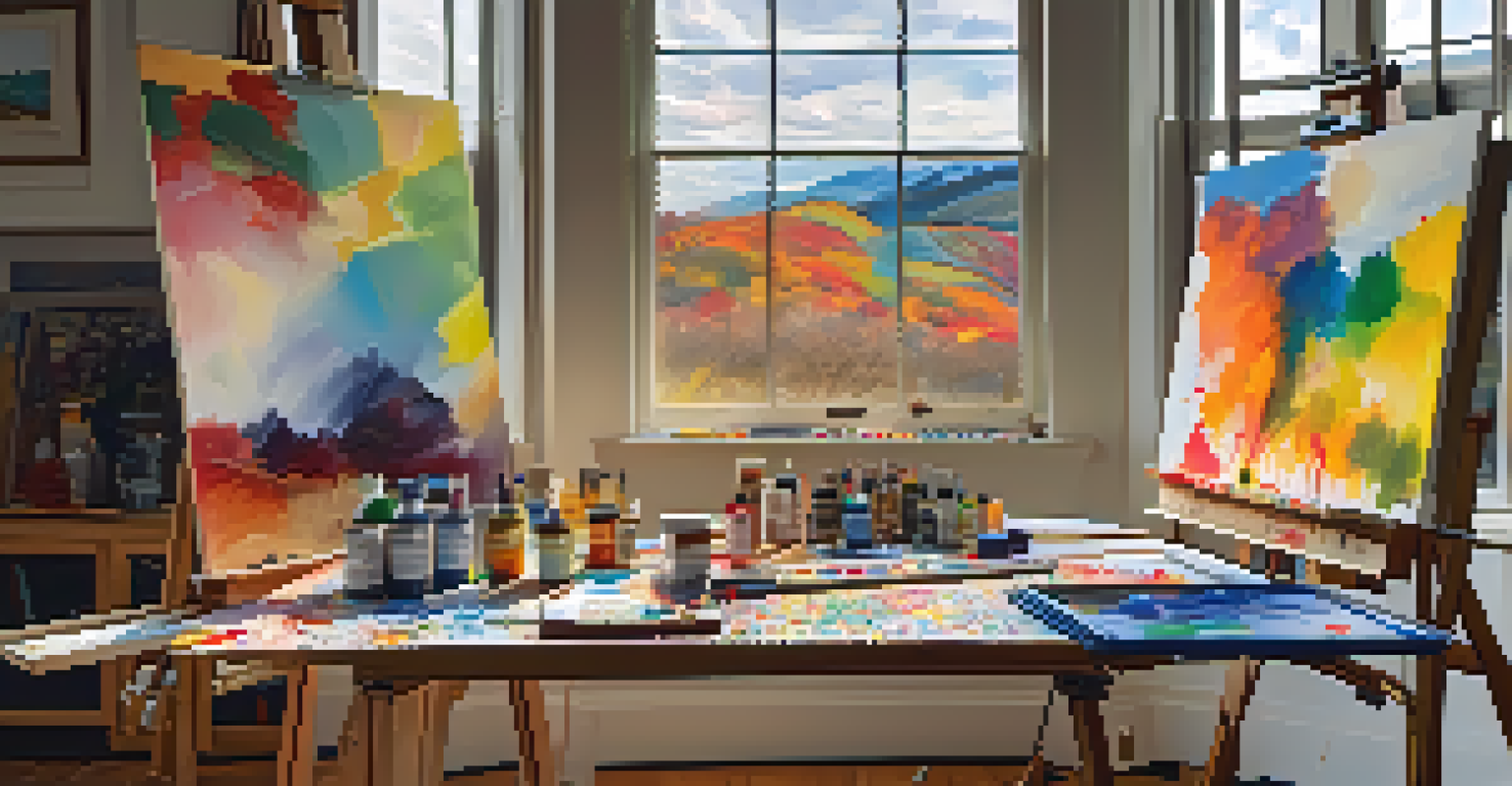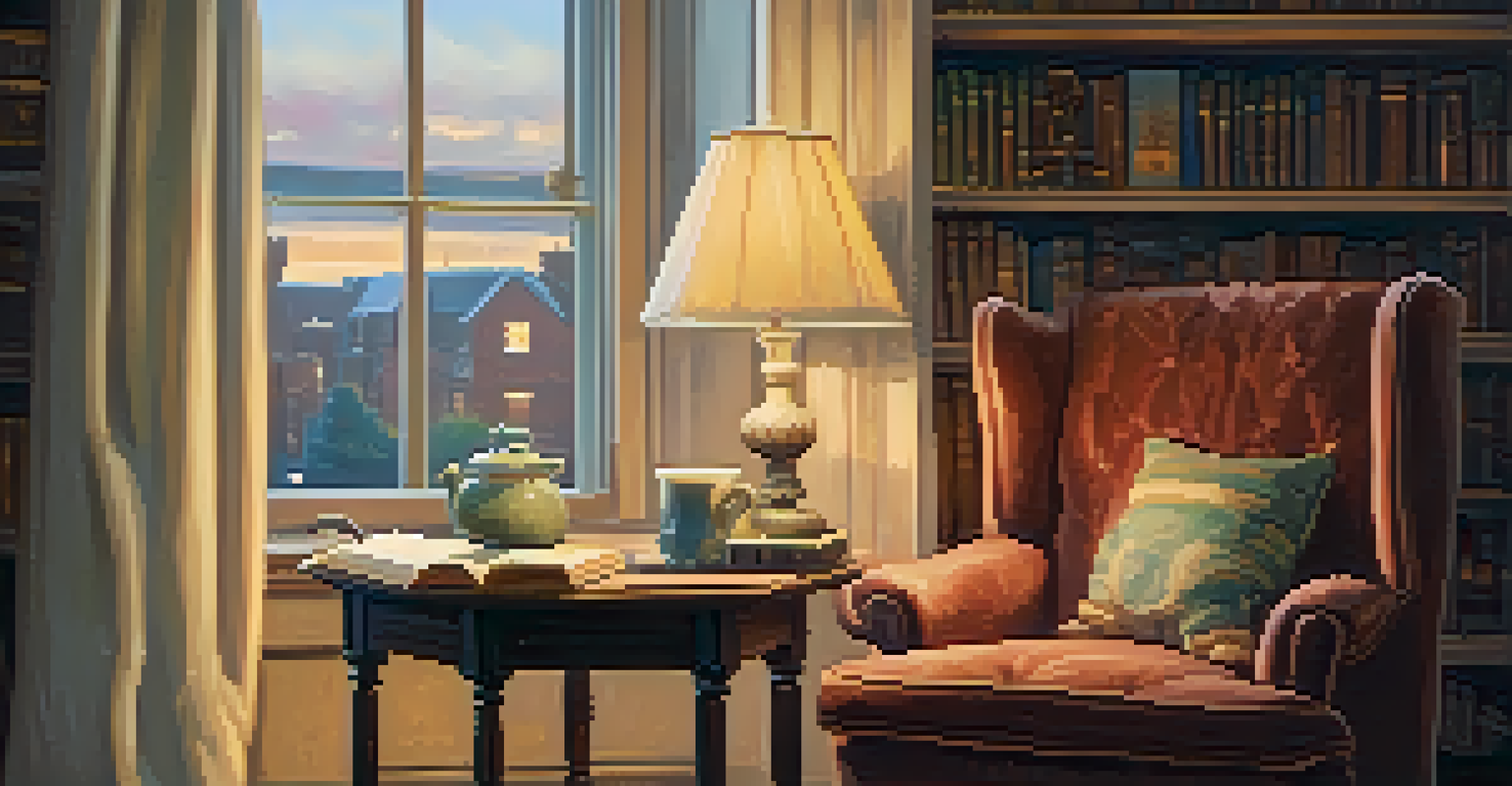The Aesthetic Experience: Art and Literature Converged

Understanding the Aesthetic Experience in Art and Literature
The aesthetic experience refers to the deep emotional and intellectual engagement with art and literature. It’s that moment when a painting or a poem resonates so profoundly that it stirs something within us. This experience goes beyond mere appreciation; it invites us to explore themes, emotions, and ideas in a way that can feel transformative.
Art enables us to find ourselves and lose ourselves at the same time.
In both art and literature, the aesthetic experience often hinges on how the creator presents their vision. For example, consider how a vivid painting can evoke memories or feelings similar to those stirred by a powerful poem. Both mediums encourage us to reflect on our own experiences, making the connection between the two incredibly rich and layered.
Ultimately, the aesthetic experience serves as a bridge between the visual and the verbal, allowing us to engage with the world in a multifaceted way. It invites us to not just observe but to feel, interpret, and connect—creating a shared space where art and literature converge beautifully.
The Role of Emotion in Aesthetic Experiences
Emotion plays a pivotal role in shaping our aesthetic experiences with art and literature. When we encounter a piece of art or a well-crafted story, it's often our emotions that guide our understanding and appreciation. For instance, a dramatic painting might evoke feelings of sadness or joy, while a poignant novel can resonate with our own life experiences.

These emotional responses are not just personal; they can also be universal. A single piece of art may evoke a wide range of feelings in different viewers, reflecting their unique perspectives and backgrounds. This diversity of emotional engagement highlights the power of art and literature to connect us across cultural and temporal divides.
Aesthetic Experience Transforms Us
The aesthetic experience engages us emotionally and intellectually, allowing art and literature to resonate deeply and transform our understanding.
In this way, the aesthetic experience becomes a shared journey. It encourages dialogue, introspection, and empathy, fostering a deeper understanding of both the artwork and ourselves. By tapping into our emotions, art and literature invite us to explore the human condition in all its complexities.
How Art Inspires Literary Creation
Art has long served as a powerful muse for writers, inspiring countless literary works throughout history. The interplay between visual art and literature can lead to profound creative collaborations. For example, a writer may find inspiration in a painting, using its colors and themes to shape a narrative or character.
Literature is a way of life, not a mere reflection of it.
Consider the way literary figures like Virginia Woolf and Marcel Proust were influenced by the Impressionist movement. Their works often capture the essence of fleeting moments similar to how Impressionist paintings depict light and atmosphere. This cross-pollination enriches both fields, as writers translate visual elements into words that evoke imagery and emotion.
By drawing on the aesthetic qualities of art, writers can create a vivid sensory experience for their readers. This connection transforms the act of writing into a visual journey, allowing readers to see and feel the world through the writer's eyes. The result is a richer, more immersive storytelling experience.
Literature as a Visual Experience
While literature is primarily a verbal medium, it possesses an inherent visual quality that enhances our aesthetic experience. Writers often use descriptive language to paint pictures in our minds, engaging our senses and imagination. For instance, a well-crafted description of a landscape can transport readers to that setting, making them feel as though they are experiencing it firsthand.
This vivid imagery invites readers to visualize scenes, characters, and emotions, creating a dynamic interplay between text and imagination. Just as a viewer interprets a painting, readers actively participate in constructing the narrative, filling in the gaps with their own experiences and perspectives. This participatory nature of literature exemplifies its aesthetic power.
Emotion Connects Us to Art
Our emotional responses to art and literature create a shared journey, fostering dialogue and empathy while exploring the human condition.
Moreover, the rise of illustrated books and graphic novels has further blurred the lines between literature and visual art. These formats combine text and visuals, creating a hybrid aesthetic experience that captivates diverse audiences. By embracing this convergence, literature continues to evolve, inviting new interpretations and connections.
The Impact of Cultural Context on Aesthetic Experiences
Cultural context significantly shapes our aesthetic experiences with both art and literature. The meanings we derive from a piece of art or a literary work are often influenced by our cultural backgrounds, traditions, and societal norms. For instance, a symbol that resonates deeply in one culture may be interpreted differently in another, highlighting the importance of context.
This cultural lens not only affects individual interpretations but also informs the creation of art and literature. Artists and writers often draw from their cultural heritage, embedding their works with layers of meaning that reflect their experiences and beliefs. Such works can serve as a mirror, reflecting the values and struggles of their respective cultures.
By engaging with art and literature through a cultural lens, we enrich our understanding of the aesthetic experience. It prompts us to consider diverse perspectives and challenges us to expand our own views. This interplay fosters appreciation for the myriad ways in which creativity can illuminate the human experience.
The Aesthetic Experience in Modern Digital Art and Literature
The digital age has revolutionized how we experience art and literature, creating new avenues for aesthetic engagement. From interactive storytelling to digital art installations, technology has expanded the boundaries of creativity. This evolution allows for innovative experiences that blend visual and literary elements in ways previously unimaginable.
Take, for instance, the rise of augmented reality (AR) in art exhibitions. Artists can now overlay digital narratives onto physical spaces, inviting viewers to explore stories in real-time. Similarly, interactive e-books engage readers in unique ways, allowing them to alter narratives based on their choices, thereby merging literature with an immersive visual experience.
Digital Age Expands Creativity
Modern technology is revolutionizing aesthetic experiences, blending visual and literary elements to create dynamic, interactive engagement.
These modern forms of expression challenge traditional notions of art and literature, encouraging us to rethink how we engage with aesthetics. As we navigate this digital landscape, the aesthetic experience becomes more dynamic and participatory, inviting us to be active co-creators rather than passive consumers. This shift may redefine our understanding of creativity and connection.
The Future of Aesthetic Experiences in Art and Literature
As we look to the future, the convergence of art and literature will likely continue to evolve. Emerging technologies and interdisciplinary collaboration are paving the way for innovative aesthetic experiences that challenge conventional boundaries. We may witness the fusion of various art forms, creating multi-sensory experiences that engage audiences on deeper levels.
Moreover, as global connectivity increases, the sharing of diverse cultural perspectives will enrich our understanding of art and literature. This cross-cultural exchange can lead to new creative expressions that draw from multiple influences, resulting in works that are both universally relatable and uniquely specific.

Ultimately, the future of aesthetic experiences promises to be an exciting landscape of exploration and discovery. As we embrace new mediums and ideas, we can look forward to a continued journey of connection, understanding, and appreciation between art and literature, each enhancing the other in beautiful ways.